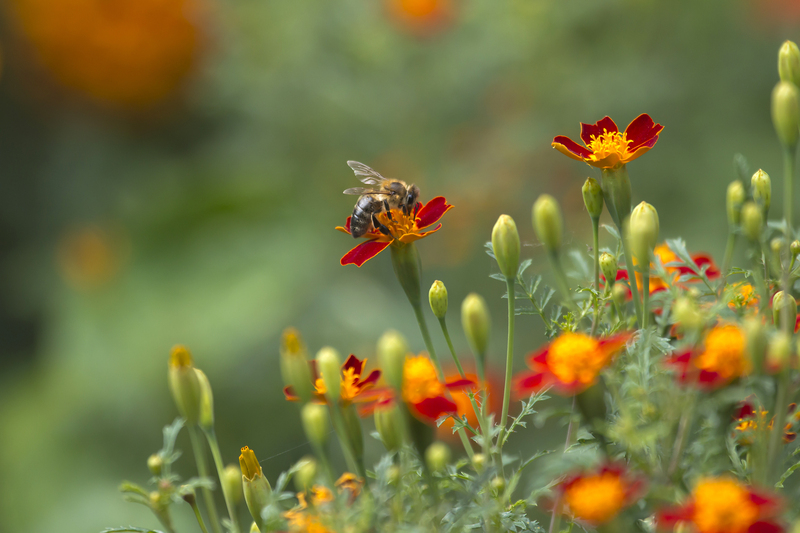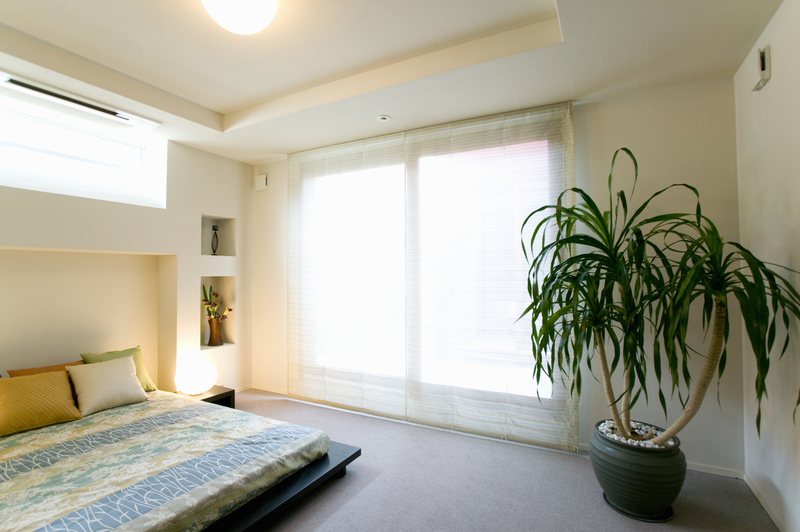Mastering Orchid Care for a Thriving Indoor Garden
Posted on 07/09/2025
Mastering Orchid Care for a Thriving Indoor Garden
Feeling captivated by the exotic beauty of orchids but intimidated by their mysterious reputation? Orchid care is often perceived as complex, but with the right guidance, anyone can cultivate a lush, blooming indoor garden. In this comprehensive guide, you'll discover everything you need to know to master orchid care and enjoy healthy, flourishing plants year-round.

Understanding Orchids: A Quick Overview
Orchids are among the largest and most diverse plant families on Earth, boasting over 25,000 species and 100,000 hybrids. Native to nearly every continent, these mesmerizing plants add elegance, color, and fragrance to any indoor space.
- Phalaenopsis (Moth Orchids): The most common and beginner-friendly, known for their long-lasting flowers.
- Cattleya: Famous for large, fragrant blooms; often called the "Queen of Orchids."
- Dendrobium: Hardy, with a wide variety of sizes and colors.
- Oncidium (Dancing Lady): Noted for sprays of vibrant, playful blossoms.
By understanding the natural origins of your orchid, you'll be better equipped to provide optimal care and create a thriving indoor orchid garden.
Choosing the Right Orchid for Your Home
Begin your orchid journey by selecting a species or hybrid that matches your environment and lifestyle.
- Light Availability: Phalaenopsis and Paphiopedilum orchids adapt best to lower indoor light.
- Space: Choose compact orchids such as mini-Phalaenopsis if space is limited.
- Experience: Novices should consider hardy types like Phalaenopsis or Dendrobium.
Be sure to purchase your plant from a reputable source. Healthy orchids will display firm, bright green leaves, strong roots, and (if in bloom) untattered flowers.
Optimal Lighting for Indoor Orchid Care
How Much Light Do Orchids Need?
The correct amount of light is essential to mastering indoor orchid care. While each genus has unique requirements, most orchids thrive in bright, indirect light. Too much direct sun can scorch leaves, while too little light results in weak growth and fewer blooms.
Tips for Providing the Right Lighting
- East or South-Facing Windows: Place orchids near these windows for gentle morning sun.
- Filtered Light: Use sheer curtains or blinds to diffuse harsh sunshine.
- Artificial Grow Lights: When natural light is not enough, supplement with full-spectrum LED grow lights for 12-16 hours daily.
Observe your orchid's leaves: Bright green color indicates proper lighting, while dark green suggests insufficient light and yellowish tones mean overexposure.
Common Light Problems
- Red or brown spots: Sign of sunburn, move plant to less intense light.
- No flowers: Insufficient light--move closer to light source or supplement artificially.
Mastering Watering Techniques for Healthy Orchids
One of the biggest misconceptions in orchid care is about watering. Both overwatering and underwatering can harm orchids, often leading to root rot or dehydration.
General Watering Guidelines
- Water Thoroughly, but Infrequently: Soak roots, then allow the potting medium to dry out before next watering.
- Frequency: Most orchids need water once a week, but adjust depending on humidity, pot type, and orchid species.
- Water Temperature: Use room temperature or slightly tepid water; avoid cold tap water directly on roots.
Tip: Use your finger or a wooden skewer in the potting mix. If it comes out dry, it's time to water.
Signs of Improper Watering
- Mushy, brown roots: Overwatering/poor drainage.
- Wrinkled leaves: Underwatering or root damage.
Always remember: It is better to slightly underwater than overwater orchids!
Choosing the Right Potting Medium and Containers
Best Potting Mixes for Orchids
Unlike typical houseplants, orchids do not grow in regular soil. Their roots require ample air, drainage, and specific nutrients to flourish.
- Bark Mixes: Most popular; excellent aeration for roots.
- Sphagnum Moss: Retains moisture well; suitable for younger plants or dry environments.
- Perlite, Coconut Husk Chips, Charcoal: Often added to increase drainage and structure.
Choosing Pots for Your Orchid
- Clear plastic pots: Allow easy root inspection and more light penetration; encourage healthy root growth.
- Terracotta/clay pots: Naturally wick away moisture, reducing overwatering risks.
- Drainage: Always use pots with multiple drainage holes to prevent root rot.
After potting, allow the orchid time to acclimate before resuming regular watering and feeding.
Fertilizing Orchids: Feeding for Vibrant Blooms
Proper fertilization is vital for orchid growth, health, and flowering. The adage "weakly, weekly" sums up the best approach--diluted fertilizer applied frequently.
How to Fertilize Orchids
- Fertilizer: Use a balanced 20-20-20 fertilizer formulated for orchids.
- Frequency: Dilute to quarter-strength and feed every 1-2 weeks.
- Flush: Once a month, water orchid thoroughly to wash away fertilizer salts.
Over-fertilizing can burn roots and damage your plant. Reduce feeding during dormant periods (winter or post-bloom).
Managing Humidity and Temperature
Orchids hail from diverse environments, but many commonly grown varieties adore moderate to high humidity and stable, warm temperatures.
Humidity Tips
- Target Level: Maintain 40%-60% relative humidity.
- Humidity Trays: Set orchid pots atop trays filled with pebbles and water (ensure pots are above water level).
- Misting: Lightly mist leaves, but avoid wetting blooms and be cautious of fungal issues.
- Humidifiers: Useful in dry climates or during winter heating.
Ideal Temperature Range
- Day: 65-80?F (18-27?C)
- Night: 55-65?F (13-18?C)
Temperature fluctuations can disrupt blooming. Most orchids need slightly cooler nights to trigger flower spikes.
Repotting Orchids: When and How
Regular repotting is key to healthy indoor orchid gardens. Fresh potting media improves aeration and reduces the risk of disease.
Signs Your Orchid Needs Repotting
- Roots spilling over the pot edge
- Potting medium decomposed or moldy
- Plant not thriving despite proper care
How to Repot an Orchid
- Gently remove the orchid from its pot, taking care not to damage roots.
- Trim away dead, mushy, or blackened roots with sterile scissors.
- Place the orchid in fresh orchid mix, positioning roots loosely in the pot.
- Water lightly and let the plant settle in indirect light for a few days.
Best time to repot: After flowering or as new roots (bright green tips) begin to appear.
Common Orchid Problems and Solutions
1. Pests
- Mealybugs, Aphids, Scale: Wipe leaves with soapy water or use insecticidal soap.
- Spider Mites: Increase humidity and wipe with a damp cloth.
2. Diseases
- Root Rot: Caused by overwatering/poor drainage. Remove infected roots and repot in fresh mix.
- Leaf Spots: Can indicate fungal or bacterial infection; remove affected parts and improve air circulation.
3. Lack of Blooms
- Insufficient light or improper feeding
- Temperature always warm, lacking night drops
- Plant not mature enough--patience is key!
Blooms That Last: Encouraging Flowering Year-Round
The greatest reward of orchid gardening is a spectacular floral display. While blooms may last weeks to months, getting an orchid to rebloom is a true sign of mastery.
Tips to Encourage Reblooming
- Proper Light: Increase exposure slightly during post-bloom rest phase (avoid direct midday sun).
- Temperature Drop: Cooler nights (by ~10?F/5?C) signal the plant to initiate new spikes.
- Balanced Feed: Continue mild fertilization.
Cutting spent flower spikes: For Phalaenopsis orchids, cut just above a node on the spike to encourage a secondary bloom. For other species, cut spike back to the base.

Frequently Asked Questions About Orchid Care
Q: How often should I water my orchid?
Most indoor orchids need watering once a week, but always check the potting medium. Allow it to dry out between waterings.
Q: Why are my orchid's leaves turning yellow?
Yellowing leaves can result from overwatering, lack of light, or natural leaf drop as the plant ages.
Q: Can I grow orchids in a bathroom?
Yes! Bathrooms with bright, filtered light and high humidity are excellent spaces for most orchid species.
Q: Do orchids need to be misted?
Misting isn't essential for all orchids, but it can boost humidity. Be careful not to mist flowers and avoid excessive wetting.
Q: How do I make my orchid rebloom?
Ensure your plant is getting enough light, slight night cooling, and correct feeding. Some orchids need a rest period before reblooming.
Conclusion: Becoming an Orchid Expert
With knowledge, attention, and a touch of patience, anyone can master indoor orchid care and enjoy a thriving orchid garden. Start with resilient varieties, observe each plant's needs, and adapt your care as necessary. Over time, you'll witness your orchids reward you with lush leaves and stunning, long-lasting blossoms.
Make orchid care a joyful learning journey and transform your home into a vibrant, living oasis!
Ready to bring your indoor garden to life? Begin mastering orchid care today and experience the satisfaction of growing these botanical treasures in your home.

